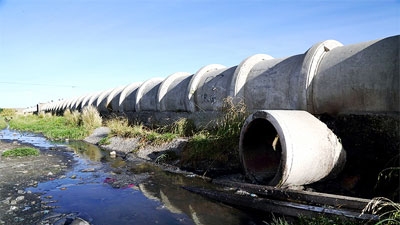According to the most recent World Bank publication entitled Wastewater Reuse for Irrigation in Bolivia, in Bolivia’s upland regions, rapid urban growth is putting water supplies under increasing strain. Demand is rising even as climate change is forcing farmers in particular to find more efficient ways to manage this fundamental resource.
It is no surprise then that the reuse of untreated wastewater to irrigate crops is already widespread here. For example, in regions of La Paz and Cochabamba, at least 5,000 hectares of agricultural land, 86 percent of the total available, is watered this way.
Yet the practice remains largely informal, leading to health risks for farmers, livestock and, of course, consumers. Those risks are themselves amplified by the increasing contamination of rivers and other natural water sources by untreated waste from the new urban areas.
As a result, the World Bank, in partnership with Bolivia’s Ministry of Environment and Water (MMAyA by its Spanish acronym) and CARE Bolivia, has been looking at ways to improve and formalize the reuse of wastewater for agriculture. The Ministry anticipates that, due to climate change, levels of precipitation will decrease, leading to falling water tables and increased use of aquifers, making the challenge all the more urgent.
The good news is that local farmers are already largely aware of the benefits — and dangers — of irrigating with wastewater, and are receptive to efforts to increase, improve and make safer the practice.
The Field Note Wastewater Reuse for Irrigation in Bolivia also summarizes a World Bank study of 650 farming households in areas that receive wastewater from La Paz and El Alto, roughly half felt that wastewater increased productivity or harvests, while also reducing the need for fertilizer.
However, more than 90 percent saw disease to humans, whether farmers, their families, or consumers, as a risk. Indeed, 60 percent specifically cited the danger of rheumatic, lung, gastrointestinal and skin diseases. A smaller proportion was also concerned about the negative impacts on their livestock, whose growth can even be stunted by some infections.
But most importantly, perhaps, was the overwhelmingly positive response from farmers to the opportunity to take part in a formal, community-led plan to reuse wastewater. Over 91 percent were in favor of new programs, suggesting that there was a broad understanding that the risks of wastewater irrigation can be eliminated through appropriate management. Collective work for the common good is a tradition with deep roots in Bolivia and 95 percent said they were willing to provide their labor. Eighty-three percent said they would be prepared to make cash contributions.
“Farmers will need specific technical assistance, covering both crop selection and crop management. But there is also a need for a broader-focused public awareness campaign about the benefits, and related hygiene requirements, of reusing wastewater for irrigation, targeting farmers, retailers and consumers”, said Franz Rojas, Water and Sanitation Specialist and Bolivia Country Coordinator of the World Bank Group’s Water and Sanitation Program.

